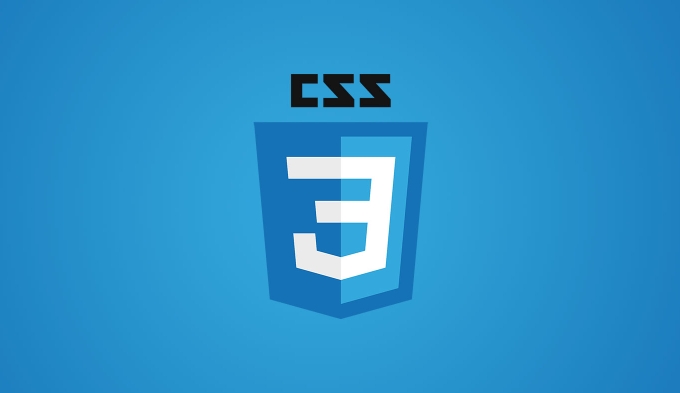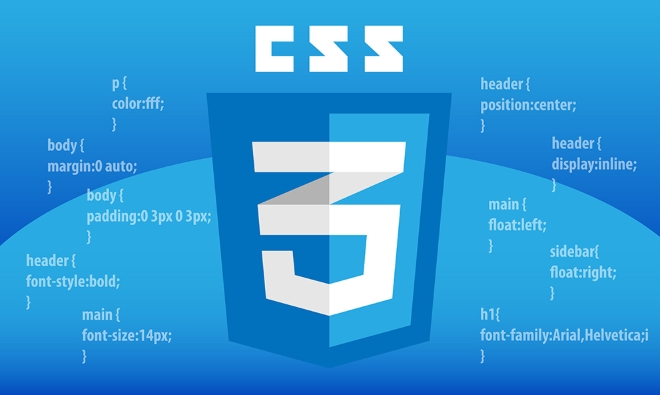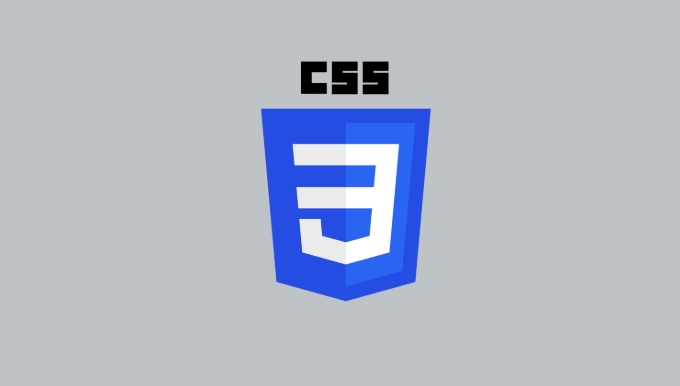The choice of CSS units depends on design requirements and responsive requirements. 1. px is used for fixed size, suitable for precise control but lack of elasticity; 2. em is a relative unit, which is easily caused by the influence of the parent element, while rem is more stable based on the root element and is suitable for global scaling; 3. vw/vh is based on the viewport size, suitable for responsive design, but attention should be paid to the performance under extreme screens; 4. When choosing, it should be determined based on whether responsive adjustments, element hierarchy relationships and viewport dependence. Reasonable use can improve layout flexibility and maintenance.

In web design, choosing the right CSS unit is crucial to layout and responsive design. Although px, em, rem, vw, and vh are common units, their usage scenarios and behaviors are very different.

1. px: a representative of fixed size
px (pixel) is the most basic and intuitive unit, which represents a point on the screen. Using px ensures that elements maintain consistent display on different devices, suitable for designs that require precise control. However, the disadvantage of px is its fixedness and cannot be adjusted according to the user's settings or viewport size. For example, after setting the font size to font-size: 16px; the text size will not change regardless of whether the user adjusts the browser's zoom. This "crazy" feature may affect the user experience in some cases, especially on mobile.

2. em and rem: flexibility of relative units
em is a relative unit whose value is relative to the font size of the current element. If the font size of the parent element changes, the em value of the child element will also change. This can lead to cascading problems, such as in a nested structure, multiple levels of em calculations can make styles unpredictable. Therefore, special attention should be paid to the context when using em.
In contrast, rem (root em) is more stable. It is calculated based on the font size of the HTML root element and is usually 16px by default. This means that no matter how deep the element is nested, as long as the font size of the root element remains unchanged, the performance of rem is consistent. rem is particularly suitable for unified control of global font size, such as dynamically adjusting the font size of the root element through JavaScript to achieve the overall page scaling effect.

3. vw and vh: Responsive Advantages of Viewport Units
vw (viewport width unit) and vh (viewport height unit) are units based on the browser viewport size. 1vw is equal to 1% of the viewport width, and 1vh is equal to 1% of the viewport height. These two units are great for creating responsive designs as they automatically adjust as the screen size changes. For example, setting the height of a full-screen background image to height: 100vh; ensures that it always occupies the entire screen height without being affected by other elements.
However, vw and vh also have some things to note:
- On mobile devices, the address bar of some browsers may dynamically affect viewport height, resulting in unstable vh behavior.
- When using vw to set the font size, there may be problems with too large or too small fonts, especially on ultra-wide screens.
4. How to choose the right unit?
The key to choosing a CSS unit is to understand the design requirements and the characteristics of the target equipment:
- If you are pursuing absolute precise control without responsive adjustments, px is a reliable choice.
- Rem is more recommended than em for text or components that need to be scaled because it avoids the complexity of cascade.
- vw and vh are ideal when you need elements to automatically adjust with viewport changes, but be careful to handle performance in extreme cases.
- Certain modern units such as ch (character width), ex (x letter height), etc. also have specific uses, but are used less frequently in daily development.
Basically, this is all. Using these units reasonably can make your layout more flexible and easier to maintain.
The above is the detailed content of Demystifying CSS Units: px, em, rem, vw, vh comparisons. For more information, please follow other related articles on the PHP Chinese website!

Hot AI Tools

Undress AI Tool
Undress images for free

Undresser.AI Undress
AI-powered app for creating realistic nude photos

AI Clothes Remover
Online AI tool for removing clothes from photos.

Clothoff.io
AI clothes remover

Video Face Swap
Swap faces in any video effortlessly with our completely free AI face swap tool!

Hot Article

Hot Tools

Notepad++7.3.1
Easy-to-use and free code editor

SublimeText3 Chinese version
Chinese version, very easy to use

Zend Studio 13.0.1
Powerful PHP integrated development environment

Dreamweaver CS6
Visual web development tools

SublimeText3 Mac version
God-level code editing software (SublimeText3)

Hot Topics
 How can I include CSS only on some pages?
Jun 11, 2025 am 12:01 AM
How can I include CSS only on some pages?
Jun 11, 2025 am 12:01 AM
There are three ways to selectively include CSS on a specific page: 1. Inline CSS, suitable for pages that are not frequently accessed or require unique styles; 2. Load external CSS files using JavaScript conditions, suitable for situations where flexibility is required; 3. Containment on the server side, suitable for scenarios using server-side languages. This approach can optimize website performance and maintainability, but requires balance of modularity and performance.
 Flexbox vs Grid: Understanding the Key Differences in CSS Layout
Jun 10, 2025 am 12:03 AM
Flexbox vs Grid: Understanding the Key Differences in CSS Layout
Jun 10, 2025 am 12:03 AM
Flexboxisidealforone-dimensionallayouts,whileGridsuitstwo-dimensional,complexlayouts.UseFlexboxforaligningitemsinasingleaxisandGridforprecisecontroloverrowsandcolumnsinintricatedesigns.
 Creating an Auto-Closing Notification With an HTML Popover
Jun 10, 2025 am 09:45 AM
Creating an Auto-Closing Notification With an HTML Popover
Jun 10, 2025 am 09:45 AM
The HTML popover attribute transforms elements into top-layer elements that can be opened and closed with a button or JavaScript. Popovers can be dismissed a number of ways, but there is no option to auto-close them. Preethi has a technique you can u
 What is 'render-blocking CSS'?
Jun 24, 2025 am 12:42 AM
What is 'render-blocking CSS'?
Jun 24, 2025 am 12:42 AM
CSS blocks page rendering because browsers view inline and external CSS as key resources by default, especially with imported stylesheets, header large amounts of inline CSS, and unoptimized media query styles. 1. Extract critical CSS and embed it into HTML; 2. Delay loading non-critical CSS through JavaScript; 3. Use media attributes to optimize loading such as print styles; 4. Compress and merge CSS to reduce requests. It is recommended to use tools to extract key CSS, combine rel="preload" asynchronous loading, and use media delayed loading reasonably to avoid excessive splitting and complex script control.
 How to use Lotties in Figma
Jun 14, 2025 am 10:17 AM
How to use Lotties in Figma
Jun 14, 2025 am 10:17 AM
In the following tutorial, I will show you how to create Lottie animations in Figma. We'll use two colorful designs to exmplify how you can animate in Figma, and then I'll show you how to go from Figma to Lottie animations. All you need is a free Fig
 Breaking Boundaries: Building a Tangram Puzzle With (S)CSS
Jun 13, 2025 am 11:33 AM
Breaking Boundaries: Building a Tangram Puzzle With (S)CSS
Jun 13, 2025 am 11:33 AM
We put it to the test and it turns out Sass can replace JavaScript, at least when it comes to low-level logic and puzzle behavior. With nothing but maps, mixins, functions, and a whole lot of math, we managed to bring our Tangram puzzle to life, no J
 External vs. Internal CSS: What's the Best Approach?
Jun 20, 2025 am 12:45 AM
External vs. Internal CSS: What's the Best Approach?
Jun 20, 2025 am 12:45 AM
ThebestapproachforCSSdependsontheproject'sspecificneeds.Forlargerprojects,externalCSSisbetterduetomaintainabilityandreusability;forsmallerprojectsorsingle-pageapplications,internalCSSmightbemoresuitable.It'scrucialtobalanceprojectsize,performanceneed
 Does my CSS must be on lower case?
Jun 19, 2025 am 12:29 AM
Does my CSS must be on lower case?
Jun 19, 2025 am 12:29 AM
No,CSSdoesnothavetobeinlowercase.However,usinglowercaseisrecommendedfor:1)Consistencyandreadability,2)Avoidingerrorsinrelatedtechnologies,3)Potentialperformancebenefits,and4)Improvedcollaborationwithinteams.






